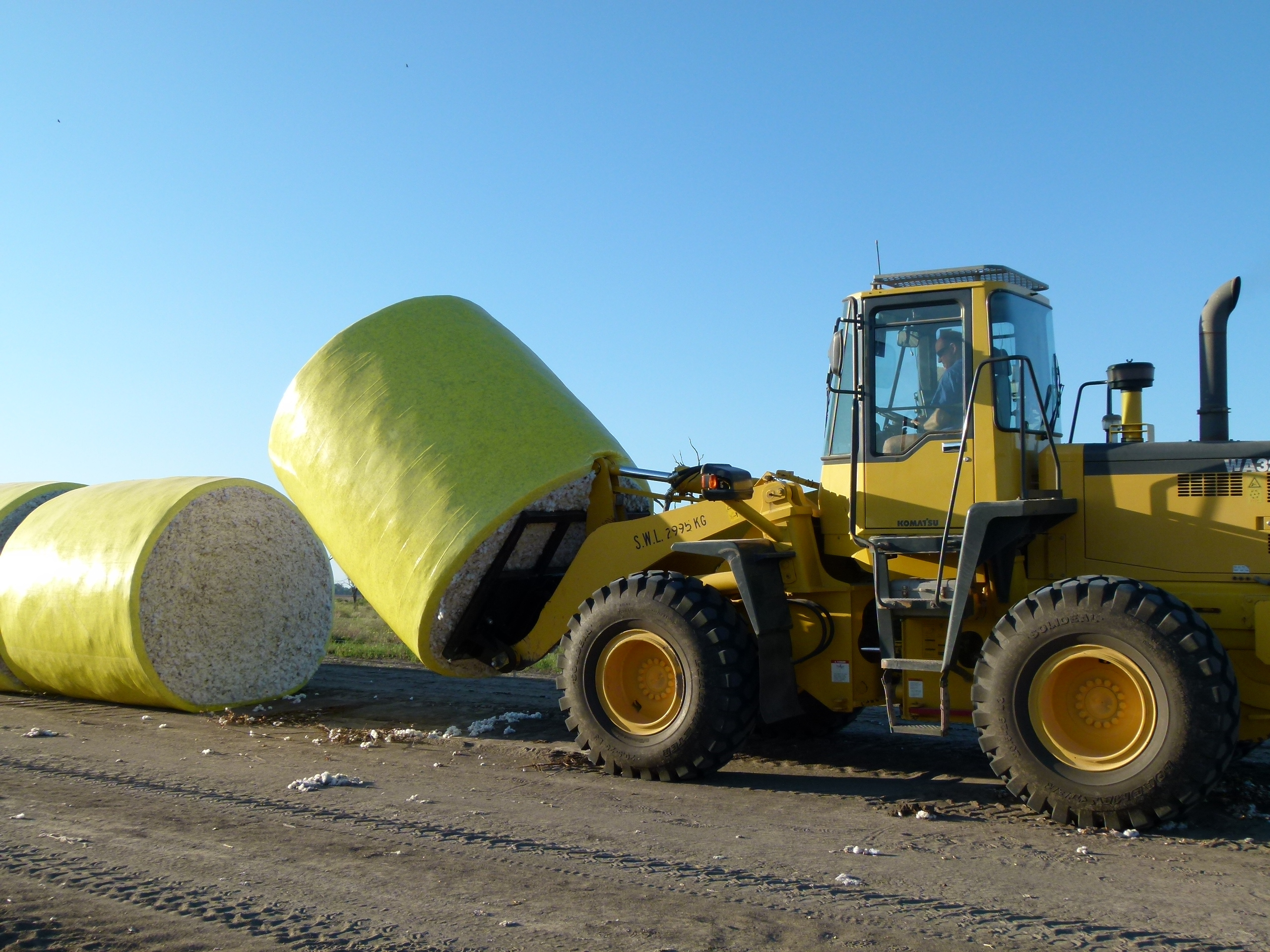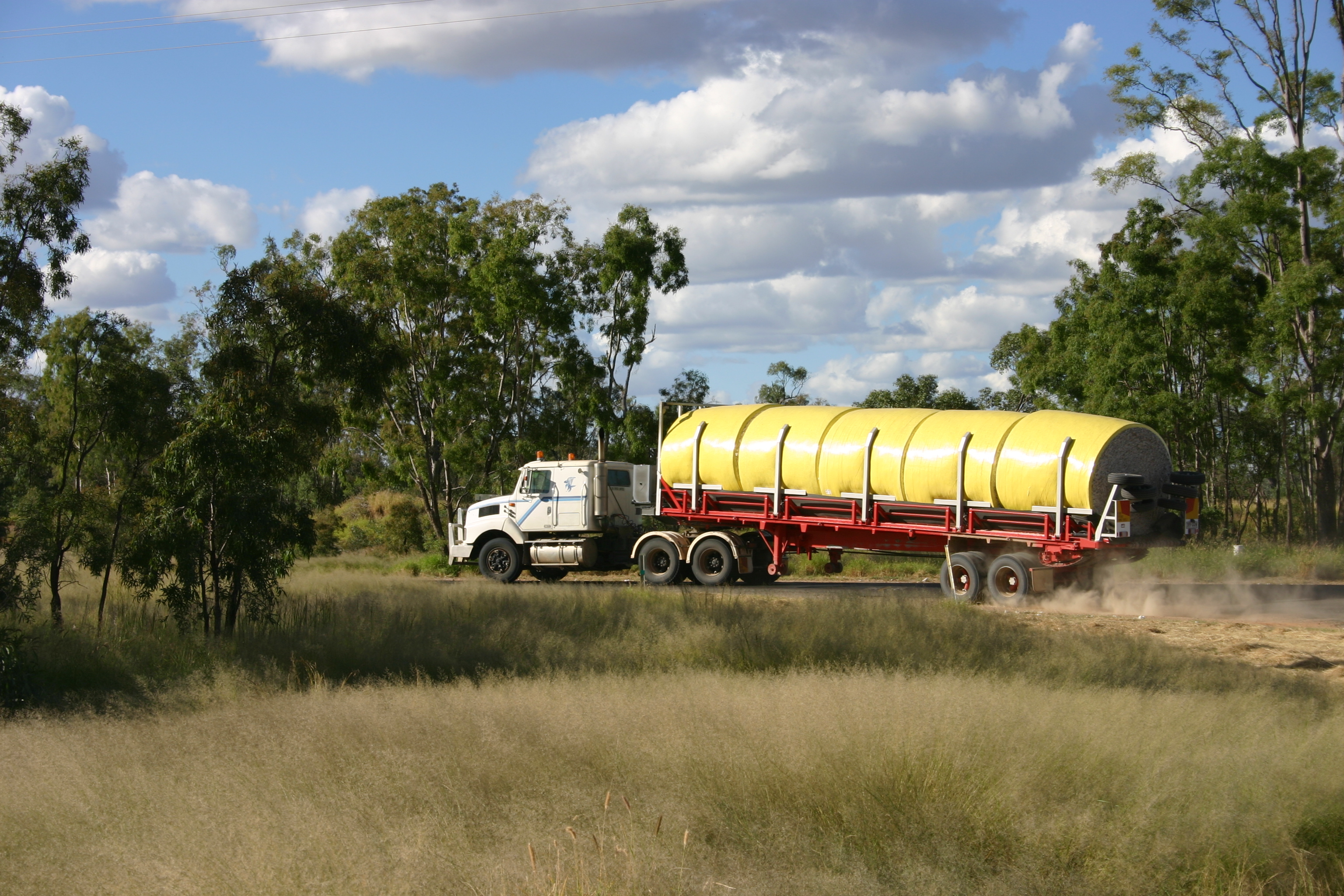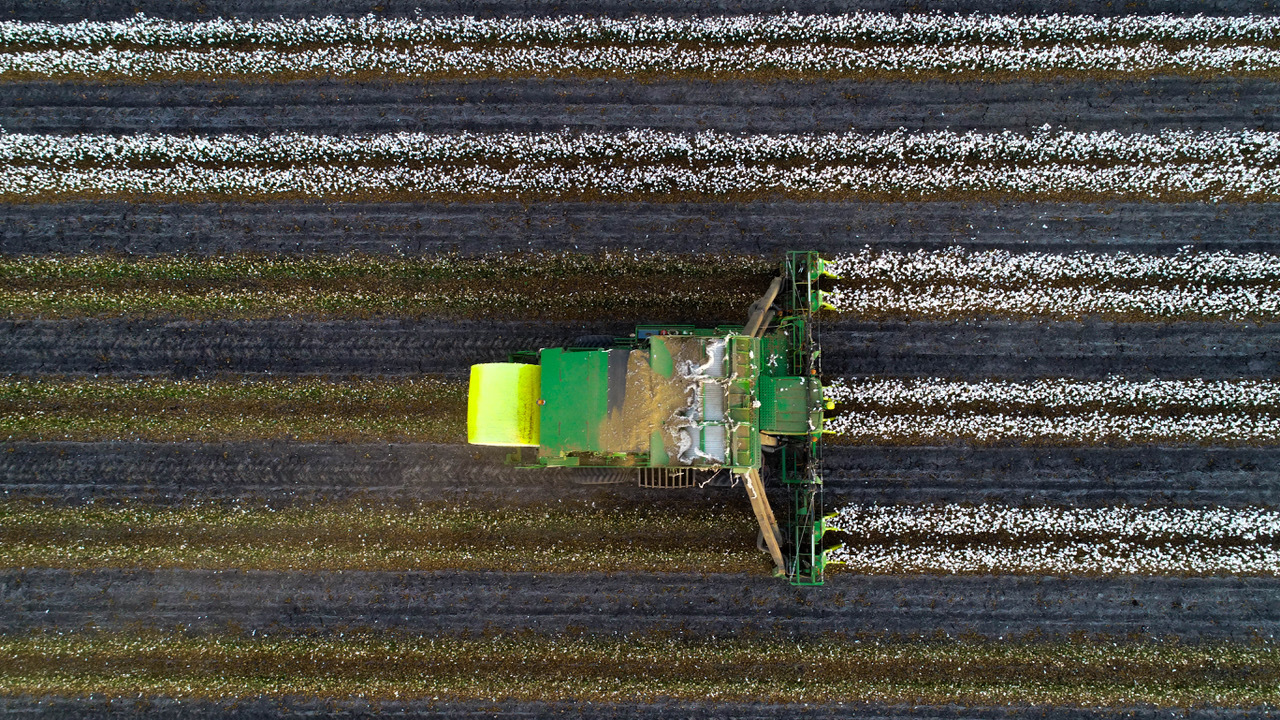Transport
The transport and movement of heavy vehicles, machinery and loads on public roads is a highly regulated process. There are strict legal responsibilities for all parties involved in the transport logistics supply chain, including cotton growers.
2025 Transport update
Cotton Movement Over the ANZAC Day Long Weekend
Walking
- Daytime “Walking” pickers over the ANZAC Day Long Weekend in in New South Wales is generally possibly across the cotton production areas. One pilot more than what normally stipulated is required. Escort requirements can be found under the Conditions – National Pilot and Escort Conditions Tab in the National Class 1 Agricultural Vehicle and Combination Mass and Dimension Exemption Notice. Refer to Table 20, Conditions – National Daytime conditions and holiday restriction.
- In Queensland daytime “Walking” across the ANZAC Long Weekend is allowed. An extra escort is required (See Table 20 Holiday Restrictions in the National Class 1 Agricultural Vehicle and Combination Mass and Dimension Exemption Notice).
Floating
New South Wales
In NSW “Floating” is generally allowed in cotton producing areas west of the Newell Highway. Restricted roads (Generally Newell Highway and East are listed on pages 10 and 11 of the New South Wales Class 1 Load Carrying Vehicle Operator's Guide (PDF, 1.18MB) . Further, the Guide was recently updated so that a class 1 heavy vehicle transporting agricultural cotton equipment may operate on the following roads during daylight hours. the Newell Highway from Tocumwal to Goondiwindi
- the Kamilaroi Highway from Willow Tree to Narrabri
- the Gwydir Highway from South Grafton to Moree
- the Bruxner Highway from Ballina to Boggabilla.
- the Riverina Highway from Bethanga to Finley
- the Kidman Way from Hillston to the intersection of the Newell Highway near Jerilderie
- Burley Griffin Way (MR84) between the Hume Highway west of Bowning and the Irrigation Way (MR80) at Yoogali
- east of Griffith
Please refer to Clause 1.7.3 which provides the following exemption to wide-load restrictions.
The following exceptions to this restriction apply to vehicles that are:
1. driving across the road;
2. carrying agricultural equipment directly engaged in an agricultural task.
Queensland
In Queensland there are no particular conditions for long weekends outside of Easter and Christmas, with operators needing to comply with the Queensland Access Conditions Guide.
General Conditions
Walking Pickers
The regulations around “walking” cotton pickers is largely unchanged from previous years and is managed under the National Class 1 Agricultural Vehicle and Combination Mass and Dimension Exemption Notice . This notice covers the movement of most self-propelled or combination agricultural machines. As round bale cotton pickers are outside the general mass and dimension limits, there are special provisions for pickers, which allow them to be “walked”. However, it is important to note that in Queensland the special provisions only apply to the 7760 and 690 series machines. Growers and contractors operating a 770 machine in Queensland has to apply for a permit through the National Heavy Vehicle Regulator (NHVR) - https://www.nhvr.gov.au/road-access/access-management/applications/agricultural-vehicle-permit
Floating Pickers
Once a picker is loaded onto a low loader, it is subject to the same rules (with the exception of Easter movements) as any other Over Mass Over Size vehicle. Permits are required through the NHVR - https://www.nhvr.gov.au/road-access/access-management/applications/oversize-overmass-permit .
Load Restraint
Growers and contractors transporting unginned cotton to gins need to ensure their loads are restrained in accordance with the performance standards listed in Heavy Vehicle (Mass, Dimension and Loading) National Regulation. The following is a guide to those standards - https://www.ntc.gov.au/sites/default/files/assets/files/Load-Restraint-Guide-2018.pdf .
Cotton Australia and other industry participants have developed a range of certified load restraint guides that operators are encouraged to use - https://cottonaustralia.com.au/transport . However, if operators rely on these Guides, they need to ensure that comply exactly with every aspect of the Guides.
Chain of Responsibility
Growers and Contractors are reminded that everyone in the cotton supply chain have legal responsibilities under Chain of Responsibility legislation. Further details can be found here - https://www.nhvr.gov.au/safety-accreditation-compliance/chain-of-responsibility .
National Heavy Vehicle Regulator
From February 10th 2014, the National Heavy Vehicle Regulator (NHVR) became the national transport regulator for all vehicles over 4.5 tonne Gross Vehicle Mass. The NHVR is a ‘one-stop shop’ for all transport-related business.
However, there is still some regulatory overlap with the states, and state-based regulator websites remain an important source of information.
Cotton Australia works to maintain proactive and direct engagement with relevant road transport authorities. Our efforts aim to reduce the compliance burden on growers through the preparation of plain English best practice transport guidelines. Additionally, Cotton Australia advocates for reforms to outdated regulations that have not kept pace with technological and other advances in the Australian cotton growing industry.
Cotton Australia has successfully negotiated on behalf of the industry various exemptions (concessions) that allow certain vehicle and trailer combination types and over-dimension loads or machinery to be operated and transported on roads outside the over-arching rules.
Below is information covering the movement of cotton equipment and cotton, responsibilities under the transport Chain of Responsibility (COR), Easter Movement Restriction Exemptions, and Load Restraint Guides.
Information for growers and transport and machinery operators
The information below primarily covers those states and territories where the National Heavy Vehicle Regulator applies.
Information for growers and transport and machinery operators
The information below primarily covers those states and territories where the National Heavy Vehicle Regulator applies.
General Information for Western Australia and the Northern Territory
Western Australia
Northern Territory

Movement of agricultural machinery on public roads
Agricultural machinery is either a self-propelled item of agricultural equipment such as a tractor, header, cotton picker or sprayer, or a combination of a tractor and other agricultural implements.
From mid-2019 the movement of agricultural equipment on public roads was governed by the National Class 1 Agricultural Vehicle and Combination Mass and Dimension Exemption Notice. This notice covers the movement of agricultural vehicles and combinations in all states and territories with the exception of Western Australia and the Northern Territory.
Farmers, their managers and their employees should become very familiar with:
It should be noted that while it is a National Notice, some requirements and dimensions differ from state to state, as well as specific conditions put in place by other road managers such as local governments. Operators should ensure that they check these specific conditions by consulting the interactive map
Movement of agricultural machinery outside what is covered by the National Notice is still possible, but it does require the issuing of a specific permit. Permits can be applied through the NHVR.
Movement of over-dimensional loads on load-carrying vehicles
Once a piece of agricultural machinery or produce is loaded onto a truck or similar load-carrying vehicle, it is largely subject to the same over-dimensional rules that apply to all transport operators.
- Information on standard vehicle mass and dimension limits.
- Applications for permits to move over-dimensional vehicles should be made through the NHVR.

Un-ginned cotton/modules
Trailer Extensions
In both NSW and Queensland, there are provisions to allow trailer extensions when used in a road train configuration, allowing most trailers to legally carry six full-sized round modules.
- The exemption is covered by the Multi-State Class 3 Heavy Vehicle Notice.
- Cotton Trailer Extensions – Information sheet.
Operators should note that all extensions must be certified by an Approved Vehicle Examiner.
Frame type Load Restraint Systems (Collier & Miller)
In NSW and Queensland, it is possible to move round modules with a maximum height of 4.6 metres (when using a frame-style load restraint system). The rules are slightly different in both states. In NSW, transporters can go to 4.6m “as of right” under the New South Wales and Queensland Class 3 Heavy Vehicle 4.6m High Loaded Semitrailer Dimension Exemption (Notice) 2014 (No. 1); while in Queensland, a specific permit must be applied for.
- Collier & Miller - Cotton Bale Load Restraint System to suit Conventional 45’ Flat Deck Semi Trailer - Full Report
- Collier & Miller - Cotton Bale Load Restraint System to suit Conventional 45’ Flat Deck Semi Trailer – Summary
Chainbeds
Operators in NSW and Queensland using chainbed loaders can avail themselves of certain dimension exemptions by utilising the following notices:
Ginned cotton
In NSW, there is a specific permit allowing the over-dimensional loading of ginned cotton bales.
Load restraint
All transport operators are legally required to restrain their loads in accordance with the Load Restraint Guide 2018 which was prepared by the National Transport Commission. In summary, the guide has performance standards that need to be met.
The NHVR has detailed information on load restraint, which can be found here.
To assist cotton industry operators, Cotton Australia and other industry participants have engaged load engineers to prepare certified load restraint guides for commonly used load configurations.
If an operator chooses to use one of these guides and relies on it as evidence that a load has been secured in accordance with the law, then the operator must ensure that every requirement set out in the guide is followed exactly.
Load Restraint Guides – Un-ginned cotton
- Load Restraint of Cotton Bales – Collier and Miller Crush Application to 8 Bale Semi and 5 Bale A-Trailer – February 2017
- Load Restraint of Cotton Bales – Collier and Miller Crush – Semitrailer – February 2017
- Six Round Module Restraint Report (Single Strap) - Straker Engineering – June 2024
- Single Strap - Six Modules Option 2 – Straker Engineering – June 2024
- Letter Authorising Alternative Winches/Straps for Single Strap, Six Module Restraint – Straker Engineering – February 2015
- Cotton Australia Module Restraint Guide 2012 Edition – updated February 2013
Load Restraint Guide – Ginned cotton

Chain of Responsibility – who is responsible?
Under the Chain of Responsibility (COR) provisions within the regulations, each party involved in the loading, restraint and transport of cotton modules from farms to a cotton gin shares responsibility for transporting the modules in a safe and compliant manner. The individual responsibility is greater for those matters more directly under your control. Growers must ensure that all cotton modules are constructed in line with industry best practices, including:
- Harvested cotton adequately compacted into rectangle or round modules so as to avoid loose modules that may be inclined to break during loading, transport or unloading at the gin site;
- Modules not so heavy that they may create an over-weight load for trucks;
- Modules properly covered in tarpaulins or wrapped;
- Modules constructed and/or presented on even pads to facilitate loading, including correct alignment onto trailer decks for transport; and
- Checking all modules are adequately restrained on trailers prior to leaving the farm (including monitoring the practices of your transport contractor).
In addition, Chain of Responsibility laws were updated in October 2018 requiring all members of the chain to have greater regard for issues around fatigue management and vehicle maintenance, in addition to load restraint.
Additional information around COR can be found:
Conditional registration
For many years, farmers have been able to avail themselves of Conditional Registration for a wide range of agricultural vehicles, allowing them to be driven legally on roads. However, the registration comes with a range of conditions that vary greatly depending on the vehicle, and in some state locations.
Cotton farmers should take the time to review the conditions that apply to their vehicles. In NSW, growers need to carry with the vehicle at all times a copy of the conditions that apply to that vehicle. The conditions will appear on the Certificate of Approved Operations (which is issued when the vehicle is Conditionally Registered for the first time). In Queensland, the conditions will be shown on the Certificate of Registration.
